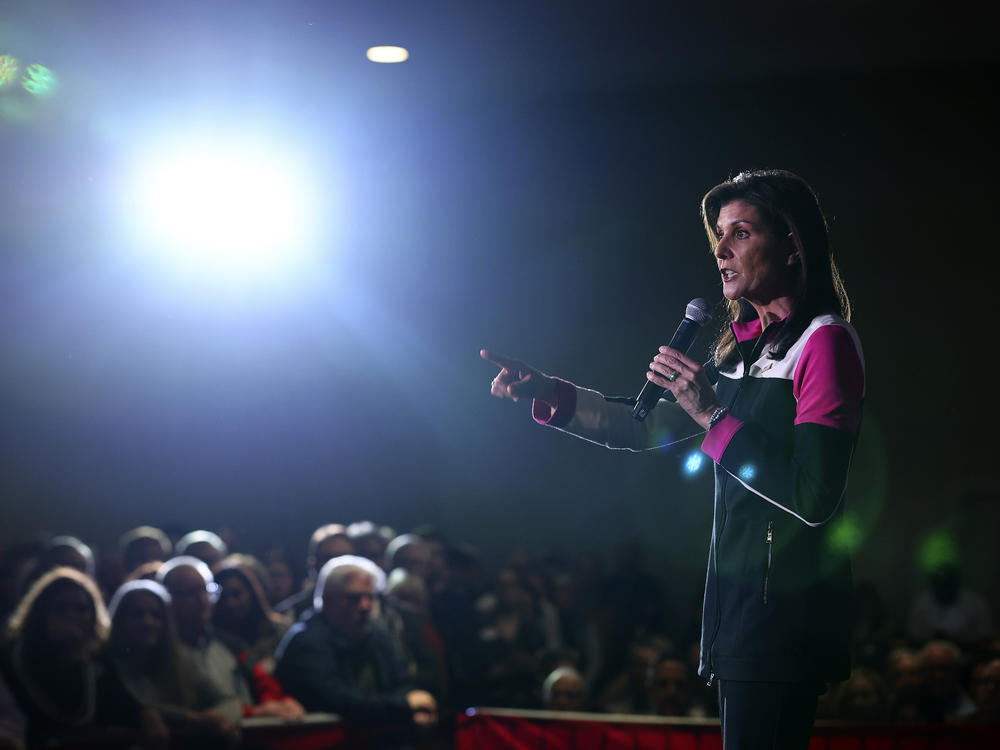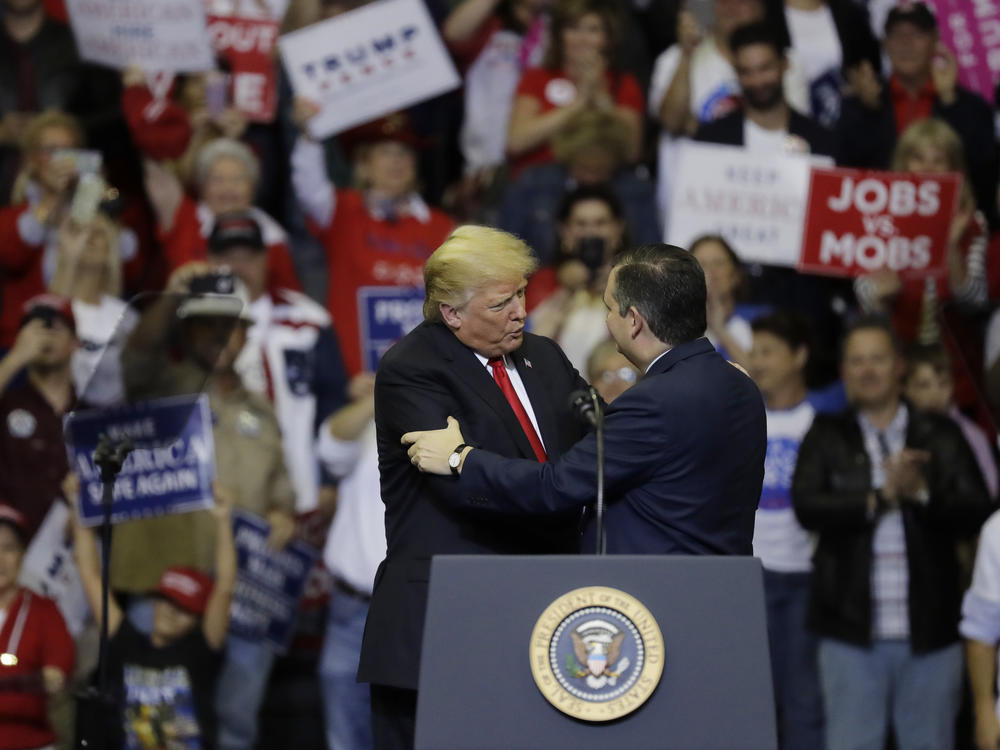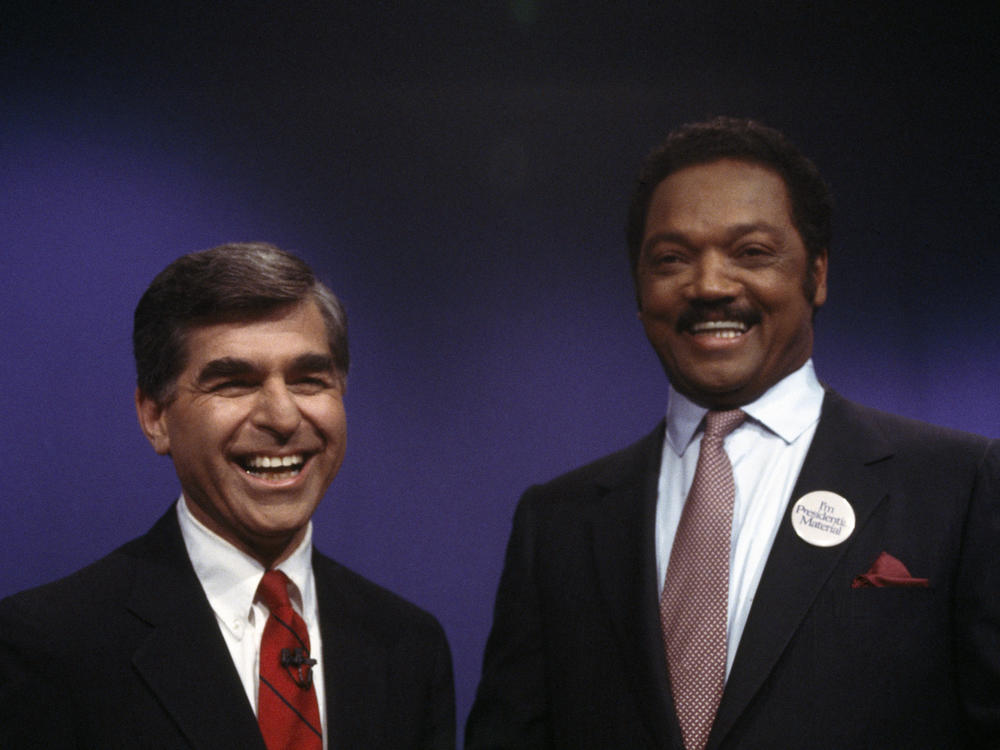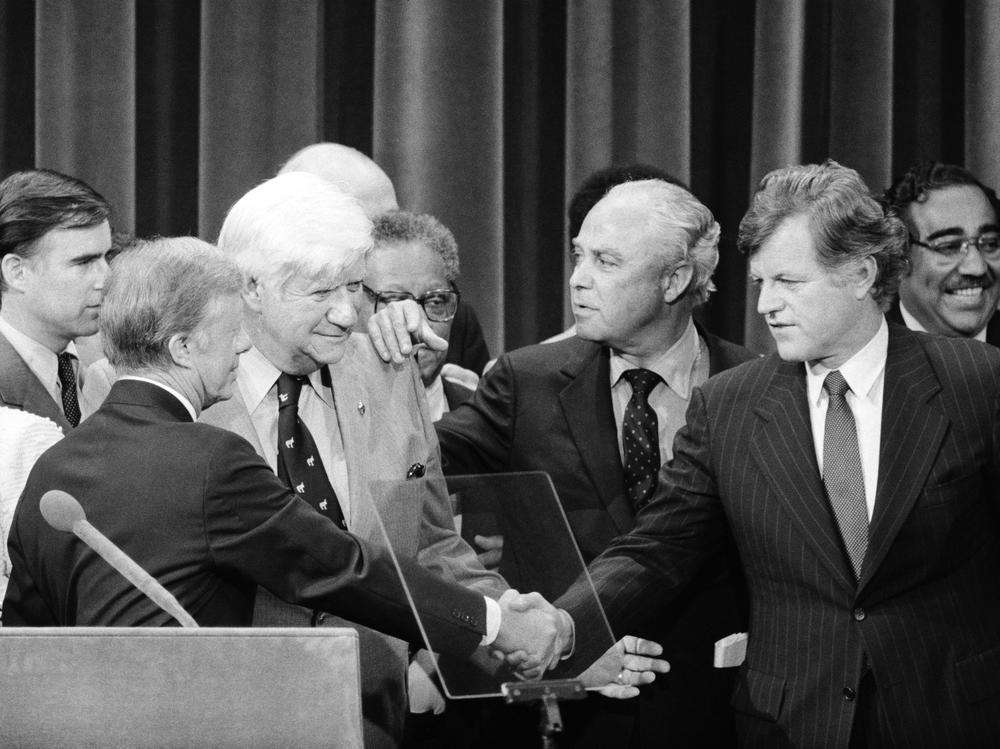Section Branding
Header Content
Haley as a holdout could still be more than a speed bump for Trump
Primary Content
Nikki Haley was never a good bet to take the Republican nomination away from Donald Trump in 2024.
She has indeed surprised many observers by outrunning the other also-rans and eclipsing all those men who were with her on stage for last year's Republican candidate debates.
But she has not beaten Trump, or come close to doing so, in any of the early primaries or caucuses. She has not proven to be an off-ramp for those in her party wary of another Trump campaign or another Trump term.
Yet even if not an off-ramp, she can still be more than a speed bump. The longer she stays in the national political conversation, the more shade she throws on the former president's prospects.
"I'm running to give people a choice," she has said, assuming they want or might need one. And while some of her financial support has decamped in recent days, she still has the money and media profile to make trouble.
That is why it is vitally important to Trump's campaign momentum to get Haley out of the race as soon as possible. History shows that when the major party nominees for president have not cleared the field of notable challengers before summer, they tend to lose in the fall.
The most recent example was Hillary Clinton in 2016
Hillary Clinton had the delegates for a first-ballot nomination but had to deal with a convention hall that often seemed dominated by the backers of rival Bernie Sanders, the senator from Vermont. As late as April, Sanders had said Clinton was "not qualified" to be president. At the convention, Sanders delegates were outnumbered by about 3 to 2 but restive and even disruptive during convention sessions.
On the convention's first night, Sanders' troops booed Clinton's name, even when their own candidate took the stage and said "Hillary Clinton must be the next president of the United States" and after he called Trump "a bully and a demagogue."
Polling later suggested a sizable portion of Sanders' supporters did not vote for Clinton in November, preferring other candidates or just staying home. They were numerous enough to have made the difference in several states Clinton narrowly lost, costing her the Electoral College.
Even Trump felt some of the disruptive effects of a contested convention in 2016 when rival Sen. Ted Cruz of Texas withheld his endorsement. While far behind in the delegate count, Cruz came to represent the last line of resistance to Trump among various party regulars who had doubts. On the convention's last night, Cruz would only urge his audience to "vote your conscience."
It was not what Trump needed at that moment, and Cruz let it linger. He did not relent and endorse the nominee until two months later in late September.
There was no dissent around Trump's re-nomination in 2020, and he is counting on the same phalanx of party fealty in 2024. He wants to go to Milwaukee in July for a coronation and have all eyes – human and electronic – fixed on him. At the moment the odds are he will have his way.
Late this past week, Haley picked up endorsements from two Republican senators, Susan Collins of Maine and Lisa Murkowski of Alaska, whose states will be holding primaries on March 5 — Super Tuesday.
But polls have shown Haley trailing Trump in all 15 of the states holding events on Super Tuesday, and a shutout could cause her to reassess her candidacy.
Haley may be no more than an annoyance to Trump at this point and a forgotten footnote once she drops out. But every week she remains in the running she poses a problem.
And Haley could introduce yet another element of uncertainty if, despite all her protests to the contrary, she continues her campaign as an independent or as the nominee of a third party.
Haley has denied interest in doing either one. But speculation has continued. The third-party group No Labels has been securing ballot lines in key states and has yet to lock in a big-name contender. Haley is in some ways a perfect fit.
Such a bid would have little chance of winning the White House in November, but it could have unpredictable effects on the distribution of the vote in swing states. Polls show an unprecedented number of voters are not happy with the two major parties' offerings and would be open to other choices.
And after the surprises of 2016 and 2020, only a fool would say a few percentage points in a few states wouldn't matter.
A return to contentious conventions
The turmoil of 2016 followed a lengthy period in which the presidential nominating conventions seemed to be living down their historical reputation for being somewhere between rollicking and riotous.
President Barack Obama was the third president in a row to be re-nominated and then win and serve a second term in the White House (following Presidents George W. Bush and Bill Clinton). All three enjoyed generally unified party support at each of their nominating conventions, contributing in no small part to their respective November victories.
But the path had not been so smooth for incumbent President George H.W. Bush in 1992. Bush was battling both a resurgent Democratic Party and a strong independent bid from billionaire H. Ross Perot that year. Then he had to share the limelight at his re-nominating convention in his own hometown of Houston with challenger Patrick Buchanan. As a journalist and speechwriter Buchanan had been a firebrand conservative, and he pursued a long-shot challenge against Bush in 1992 with little realistic prospect of success.
In the primaries and caucuses Buchanan got less than a fourth of the votes and won no states. But he had enough residual support in the party to be offered the key speaking slot on the convention's first night. He used it to showcase his most controversial attitudes and agenda, electrifying the crowd in the Astrodome but distracting from the incumbent president's own persona and priorities. Bush would then lose to Bill Clinton that November, receiving less than 40% of the nationwide popular vote.
Four years earlier, Bush had risen to the presidency as the vice president of Republican President Ronald Reagan, whose last year in office was among his best in terms of public support.
Bush in 1988 had also benefited from some disarray in Democratic ranks – including at the party's convention in Atlanta. Massachusetts Gov. Michael Dukakis had become the nominee by systematically collecting the delegates needed, eliminating a large field of contenders. But one defeated rival, African American activist and civil rights champion Jesse Jackson, withheld his support prior to the convention.
An arrangement between the campaigns devoted one night of the convention largely to a speech by Jackson and a show of strength by his supporters. They made the most of it, and that night arguably outshone and upstaged Dukakis' own acceptance speech on the convention's final night.
Something similar took place four years prior to that in 1984, when former Vice President Walter Mondale was the Democratic Party nominee after the primaries were over. The runner-up Colorado Sen. Gary Hart and his youthful contingent pressed their case and had Hart's name placed in nomination. The party still lined up with Mondale, but the sense of momentum was not what it might have been.
The 1988 and 1984 divisions among Democrats were, however, minor matters compared to the schism of 1980. That spring the challenge Sen. Ted Kennedy of Massachusetts posed to the re-nomination of incumbent Democratic President Jimmy Carter had fallen woefully short. Nonetheless, Kennedy carried his challenge to the convention floor by trying to have all delegates released from their commitments. When this failed, hundreds of Kennedy supporters walked out. And even when Kennedy spoke to endorse Carter on the final night he still sounded more like a candidate than a supporter.
Carter went on to lose to Ronald Reagan in a landslide that November.
Other incumbents plagued by convention weakness
Carter was far from being the first incumbent to lose reelection after a rocky re-nomination convention. Just four years earlier, he had been the beneficiary of a division within the GOP that had weakened incumbent President Gerald R. Ford.
Ford had been vice president when President Richard Nixon resigned on the brink of impeachment in 1974. The successor bore the burden of the Watergate scandal that scuttled Nixon and also the economic weight of high inflation, high interest rates and high unemployment. Ford ran for a term in his own right in the bicentennial year of 1976 and cruised through the first several primaries that year.
But party conservatives had a favorite in Reagan, then the former governor of California, and his campaign caught fire in the later primaries held in the South and West. He amassed nearly half the delegates to the convention, and went to the convention with at least a mathematical chance to seize the nomination, taking a stab at it by naming moderate Pennsylvania senator Richard Schweiker as his running mate.
It was not quite enough, and Reagan fell short that year. But the close call cost Ford much of the aura of his incumbency. In November, he lost to Carter.
There have been other nominees with at least decent prospects whose trajectories suffered from disunity or disarray in the summer before or during the nominating convention. Democrat Hubert Humphrey was crippled by the street violence outside — and the intraparty upheaval inside — the 1968 Democratic National Convention in Chicago. Humphrey lost to Nixon that November.
Four years before that, Republican nominee Barry Goldwater, then a senator from Arizona, had to share the media spotlight at his convention. His main rival, New York Governor Nelson Rockefeller, gave a hostile speech to the conventioneers and then led a walkout by his supporters. That fall, Goldwater lost to Lyndon B. Johnson in one of the biggest landslides in American electoral history.
The classic case dates back to 1912 when William Howard Taft was seeking a second term as president. His challenge came from fellow Republican Theodore Roosevelt, the former president. Roosevelt had come to regret handing the nomination to Taft four years earlier, and he did all he could to seize it back. Failing at the convention, Roosevelt bolted and became the nominee of the Progressive Party (also known as the "Bull Moose Party"). He finished second in November to the winner, Democrat Woodrow Wilson. Taft ran a poor third.





